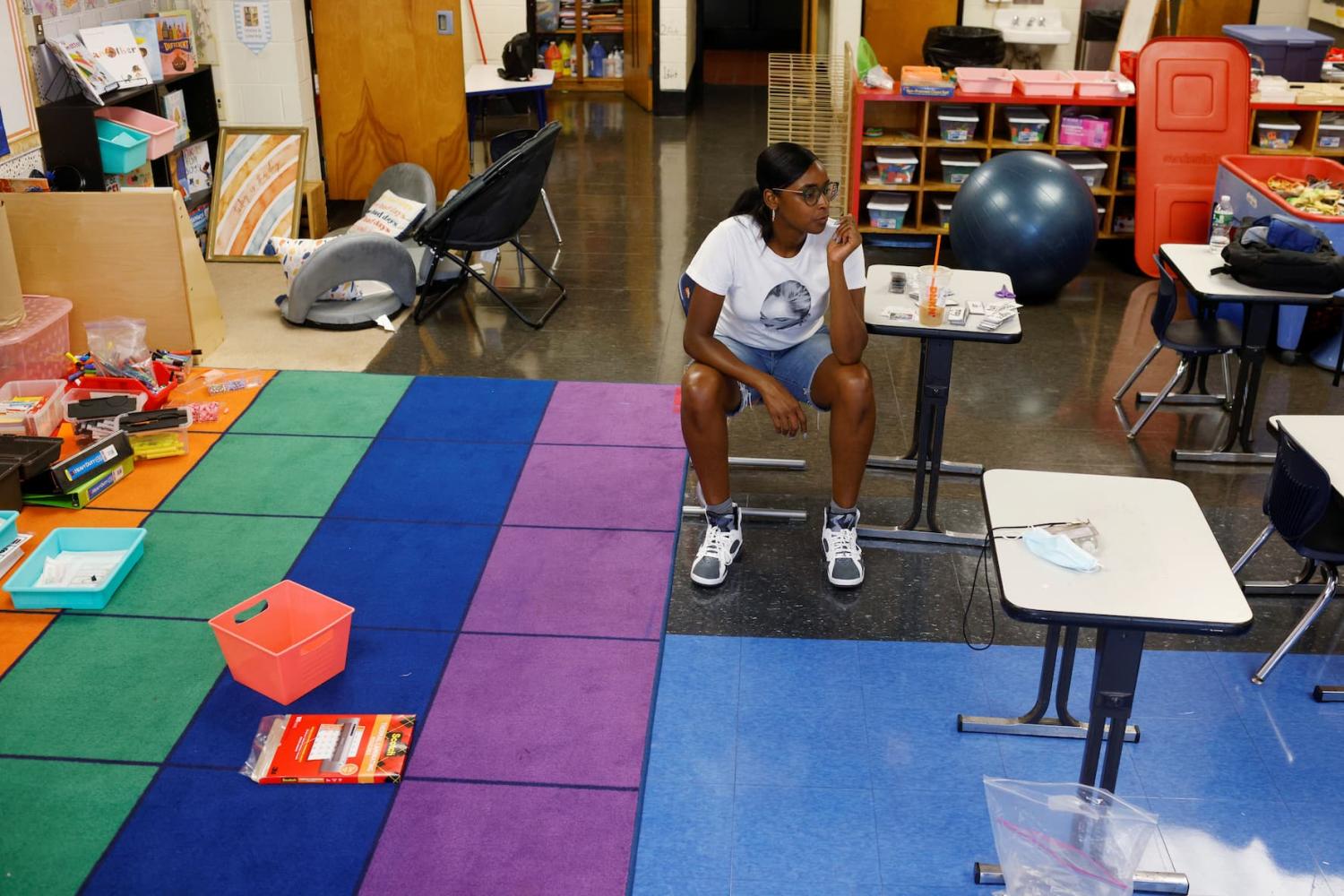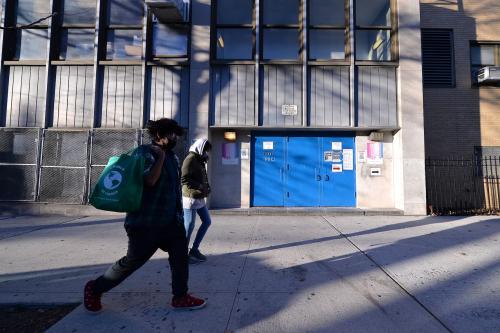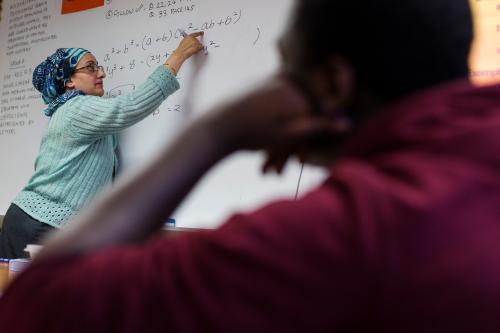Students of color benefit over the short and long run when taught by a same-race teacher. This finding is now well established in empirical research. Particularly for Black students, having even one same-race teacher improves test scores, graduation rates, attendance, and behavioral outcomes.
These direct effects of “race-matched” student-teacher interactions have led to calls for diversifying the teaching force to make it more representative of the student population. This is an appropriate lever that promotes multiple objectives: to increase the productivity of the teaching workforce, better serve Black students, and close longstanding racial achievement gaps.
However, a new study shows that the focus on the direct effects of Black teachers’ interactions with Black students (and teachers of color more generally) overlooks an important indirect effect of diverse teaching staffs: knowledge spillovers to their peers. That is, Black students tend to benefit not only from having Black teachers themselves but even from having a Black teacher in their grade level when their own teacher is white. This means that Black teachers’ impacts on Black students are even larger than we thought.
These findings come at a critical time. The recent Supreme Court decision on affirmative action could negatively affect the pipeline of Black college graduates into teaching positions, and pre-college opportunity gaps might be harder to mitigate via the college admissions process. There is, thus, an urgent need to explore ways to better train the largely white teaching workforce we have while continuing our efforts to diversity that workforce.
New evidence from North Carolina
Along with our colleagues Constance Lindsay, Romaine Campbell, and Jessica Rendon, we released a study using both interview and administrative data on 3rd through 5th graders from North Carolina. We show that the Black students of white teachers benefit a good deal from their teacher having at least one same-grade Black peer. The Black students of white novice teachers score about 10% better on both math and ELA end-of-grade tests when their teacher has a same-grade Black peer. They are also about 10% less likely to be suspended from school. These are fairly large, practically meaningful effects.
For a few reasons, our results suggest that these effects are the result of peer learning (or knowledge spillovers) as opposed to other channels. First, the results are concentrated among novice teachers with three or fewer years of experience. Second, these effects are persistent in the sense that historical exposures to peers of color continue to matter over time. If the observed effects were due to white teachers’ increasing effort due to social pressure or to Black teachers interacting with Black students in other classrooms, they would not be limited to novice teachers, nor would past peer exposures matter today. Finally, in open-ended interviews, teachers themselves corroborate that they learn from their peers, particularly on the issue of race.
For example, one white teacher specifically acknowledged the value of interacting with Black peers:
“… I have a very limited perspective as a White teacher or as a White staff member and owning and recognizing that before you can go any further. I have been really fortunate [that] out of our four 5th grade teachers, two of them are Black women and then me and the other one are White women. And I have really appreciated and grown with the ability and openness within our [group], like, hey, this happened today, I just want to talk through it and make sure that I’m in my appropriate space or how can I handle this situation or here is something that a student said and I’m not sure if that needs to be addressed and putting our heads together with our different perspectives … ”
The finding that teachers learn from their peers isn’t new; that less effective teachers improve when exposed to more effective mentors and peers has been shown in several contexts, including in the same North Carolina context studied here. What is new is the finding that white teachers learn racial competency from their Black peers. There are several implications:
Getting the full benefits of teacher diversity
First, this shows that prior research on the impacts of student-teacher race matching seriously understates the benefits of achieving a truly diverse and representative teaching force. Prior research only measures the direct effects of same-race student-teacher interactions and overlooks the indirect effects that teachers of color have on students in other classrooms via knowledge spillovers to the other teachers in their grade. In terms of a cost-benefit analysis, this means that even more resources should be devoted to creating and maintaining a teaching force that is truly representative of the student body it serves.
Second, while these results demonstrate the importance of diversifying the teaching force, this will take time, and other important work can be done now. That is, school leaders and policymakers should do the best with what they have. This means two things: being more strategic in the placements of existing teachers of color and augmenting pre- and in-service training for all teachers to include high expectations, empathy, and culturally relevant pedagogy interventions.
- Regarding teacher placements, these findings provide an important example of how diverse teams are more productive. There is potentially low-hanging fruit here: in schools that have multiple Black teachers, assigning them to different grade levels will maximize the number of white teachers who have the opportunity to learn from a Black peer and thus maximize the indirect effects of those Black teachers. Moreover, this type of assignment strategy could enable schools to ensure that a higher share of Black students is exposed to a Black teacher at least once.
- Regarding teacher trainings, the fact that white teachers learn racial competency from their Black peers suggests that it is a malleable skill that can and should be a focus of both pre- and in-service teacher training programs. Examples of training or class modules that fit in this broad basket include empathy, high expectations for all, culturally relevant pedagogy, and ethnic studies. Better preparing white teachers to thrive in our nation’s increasingly diverse classrooms is paramount to ensuring that all students have access to a quality education and that we, as a society, reap the myriad benefits of a better educated populace. This is increasingly urgent, given political headwinds to rapidly diversifying the teaching workforce that are getting stronger due to legal challenges to programs and policies that would increase diversity in higher education. Those headwinds are most obviously legal challenges and prohibitions of the use of race in hiring and admission decisions, but also the more general opposition to seriously engaging with issues of race and racial justice in schools and the public sphere.
Finally, it’s encouraging to see concrete evidence of something that many educators and school leaders have long thought: that we are stronger together and have much to learn from one another. Facilitating opportunities for teachers to connect and interact with colleagues of different backgrounds and experiences is a low-cost, easily implementable idea.
The Brookings Institution is committed to quality, independence, and impact.
We are supported by a diverse array of funders. In line with our values and policies, each Brookings publication represents the sole views of its author(s).








